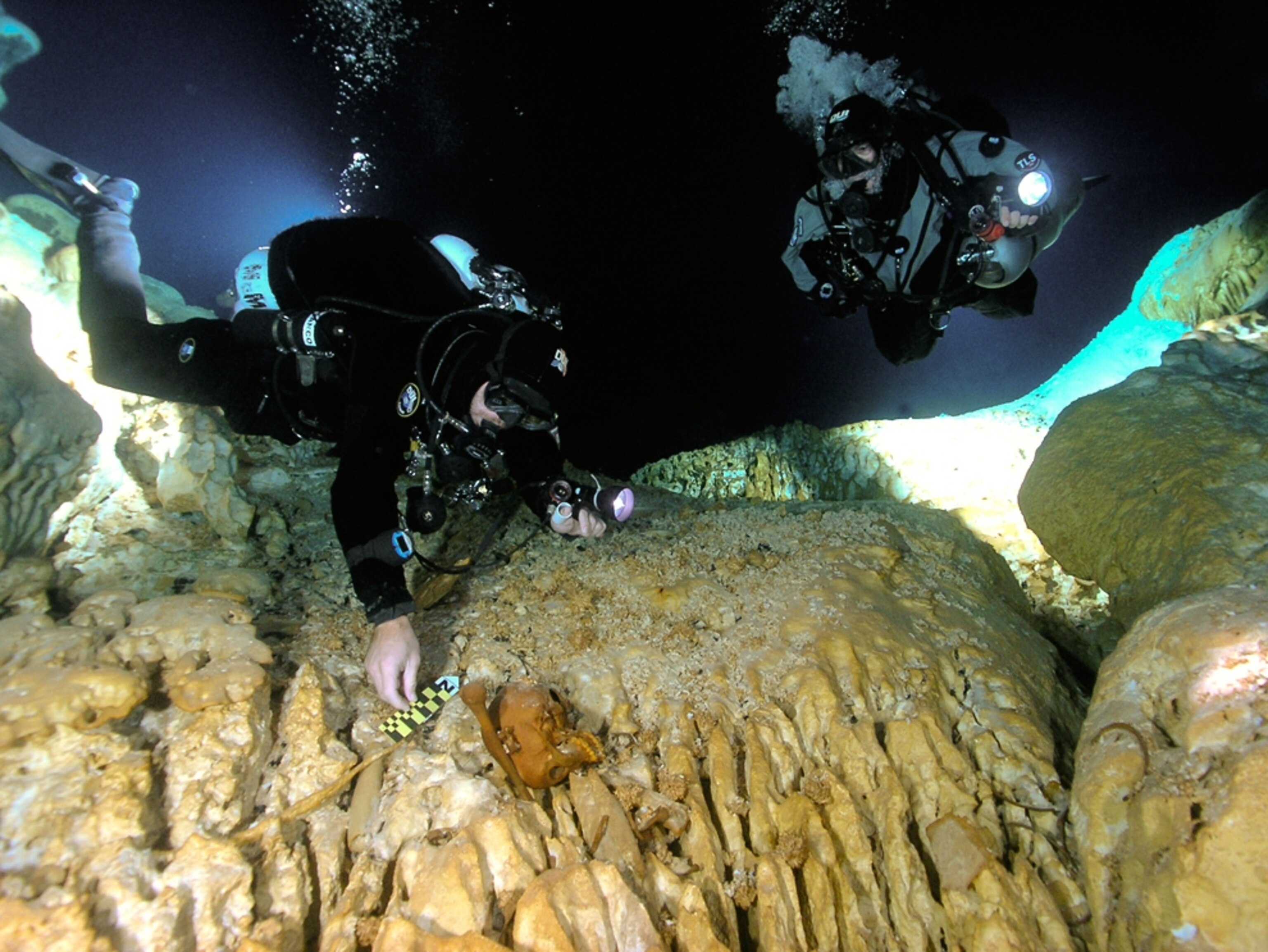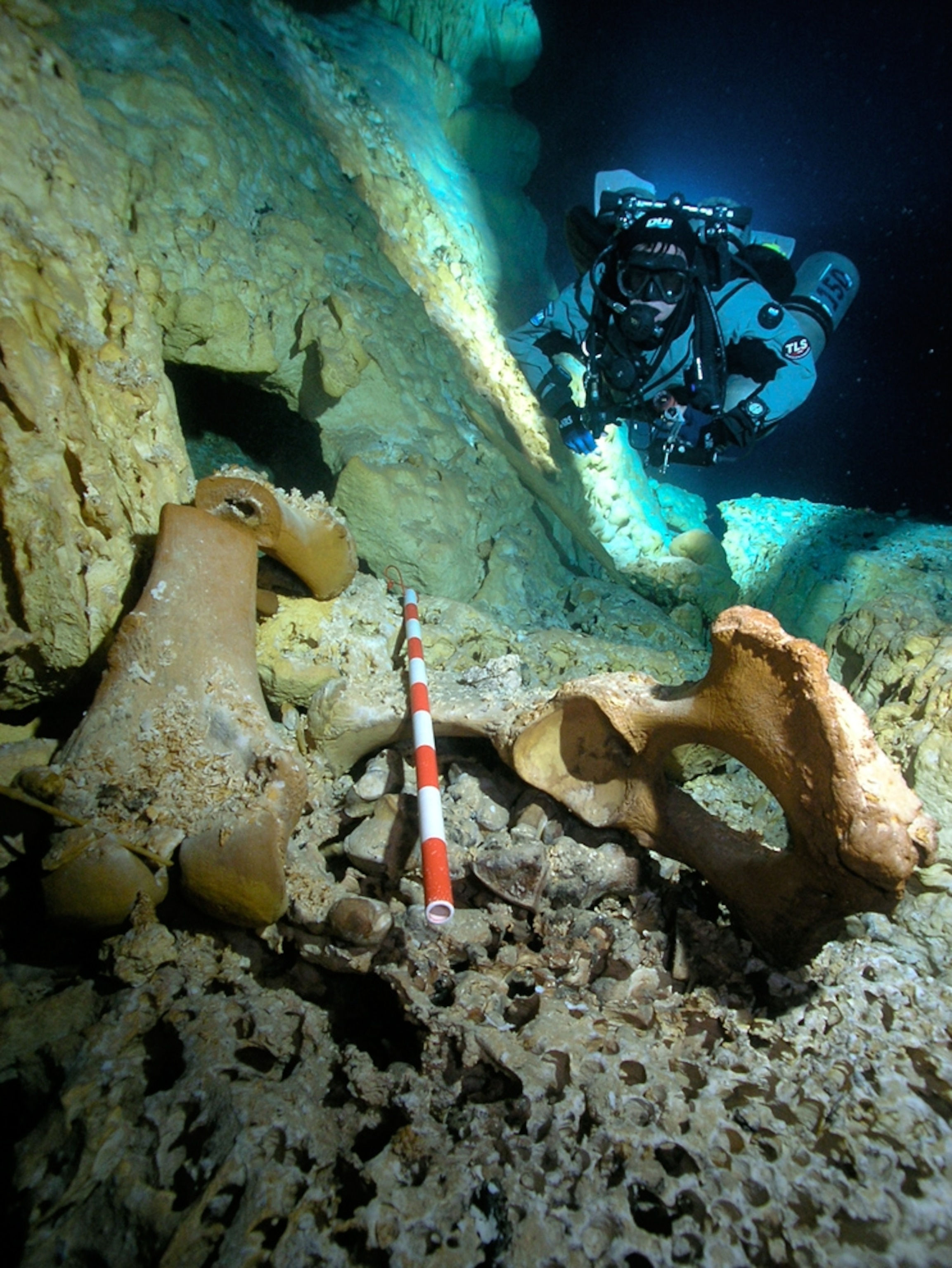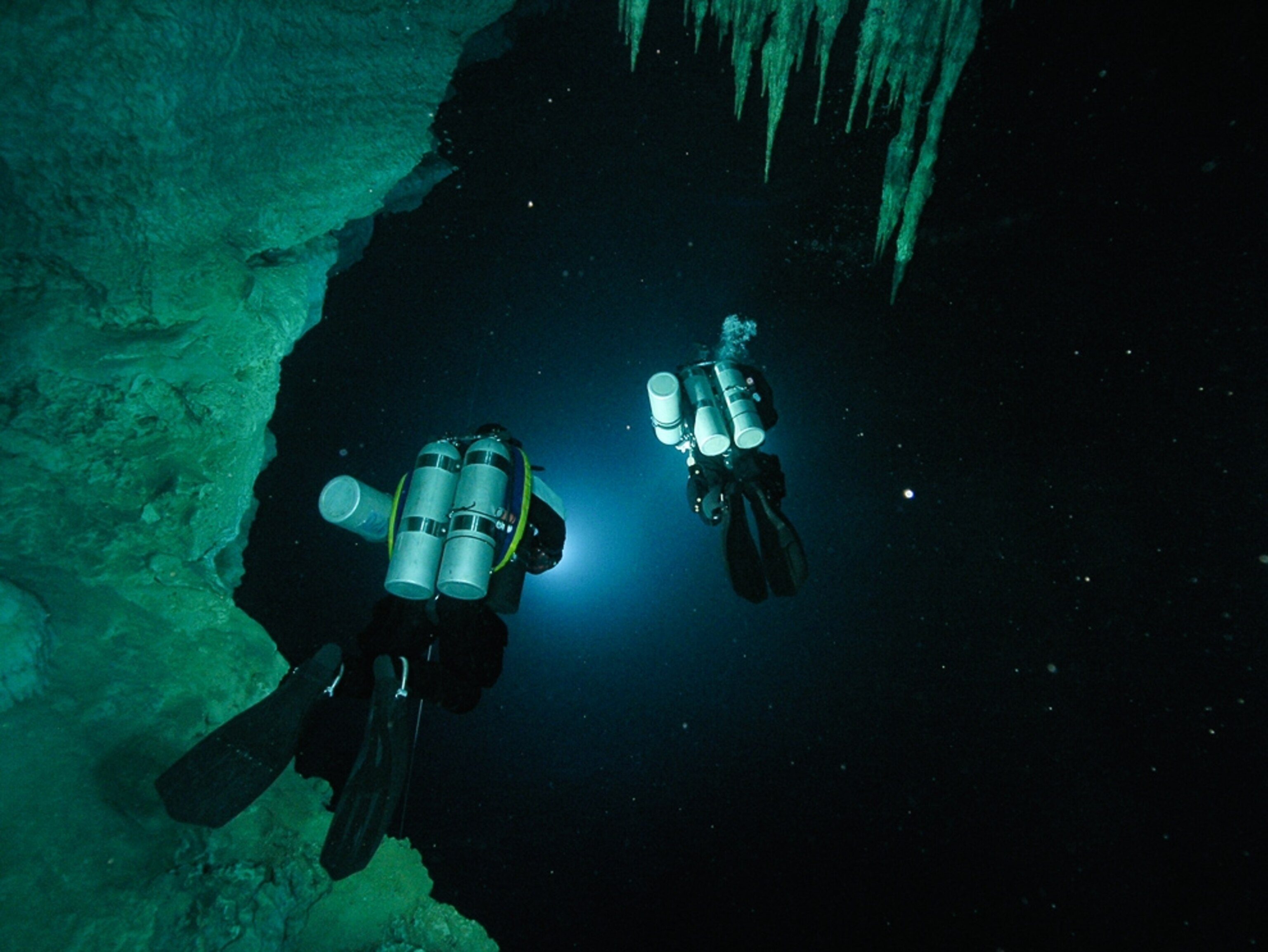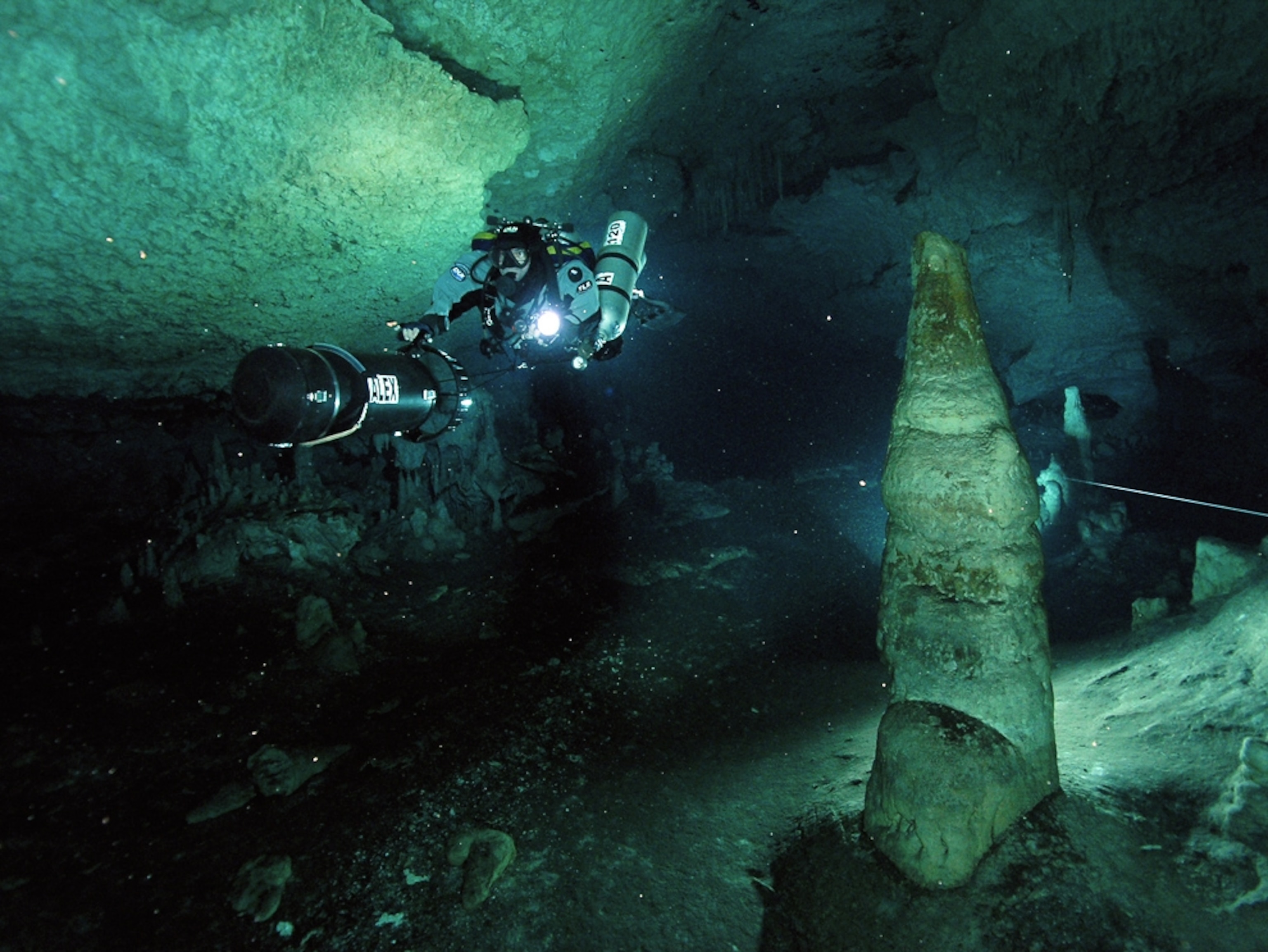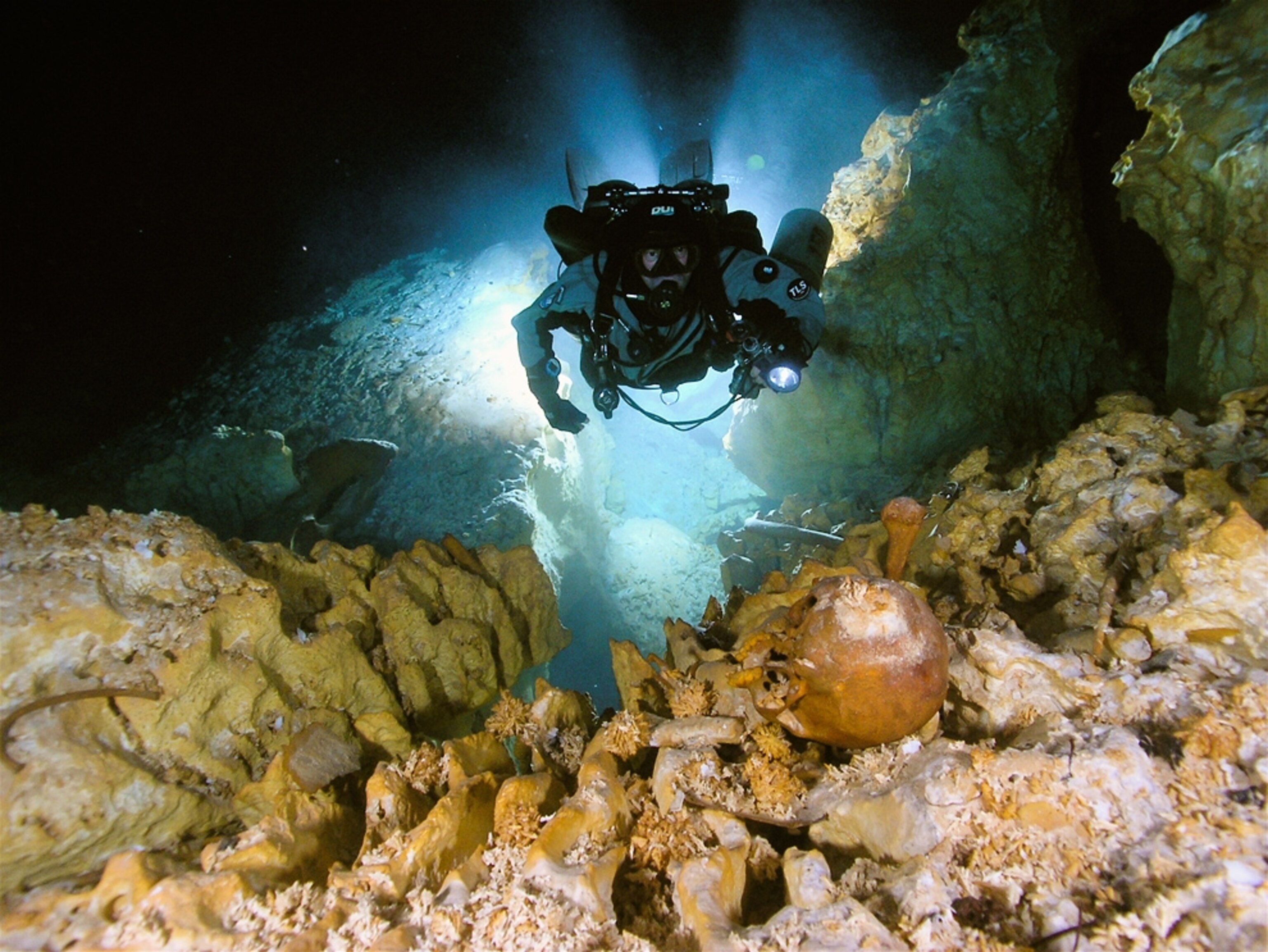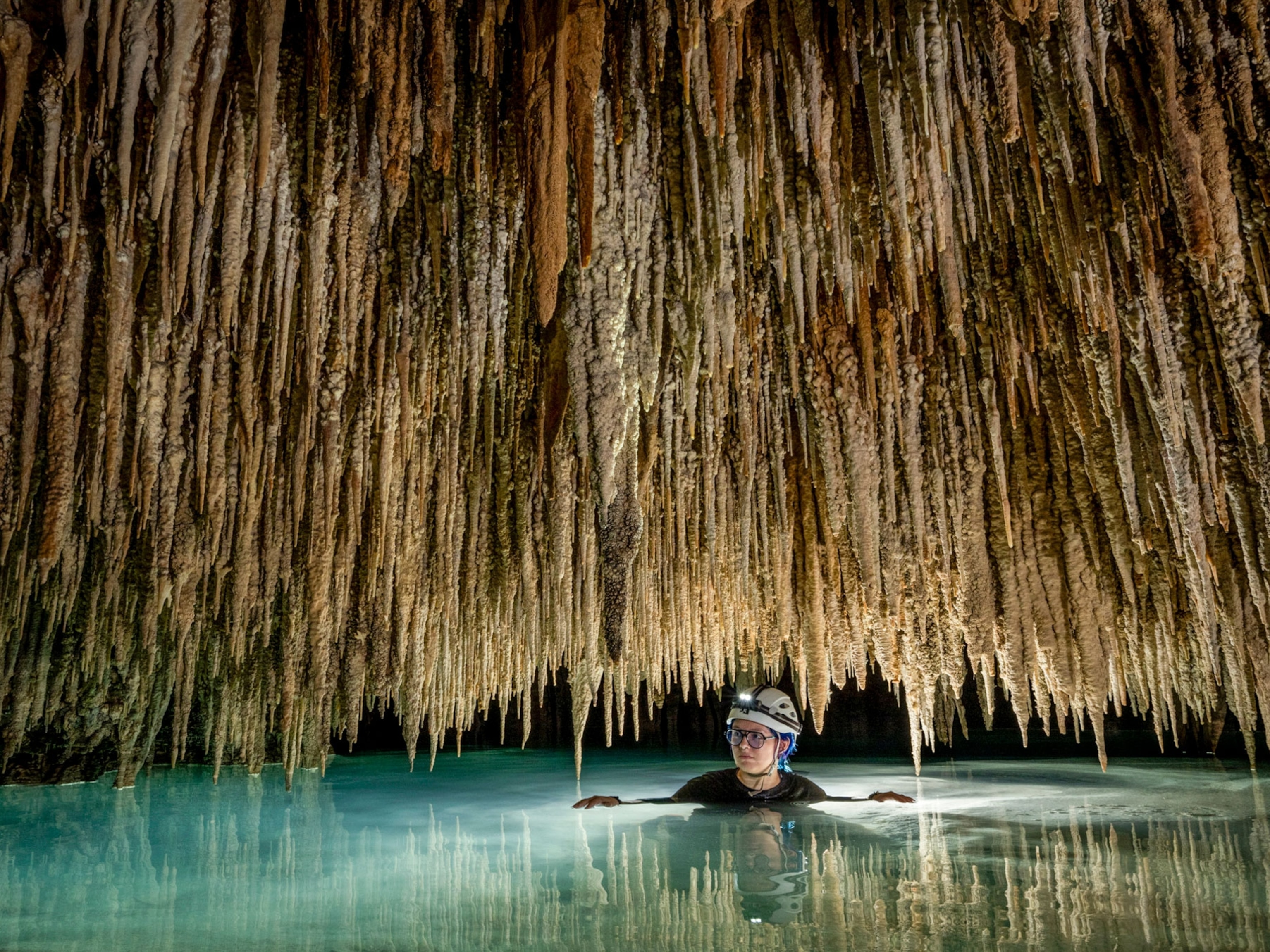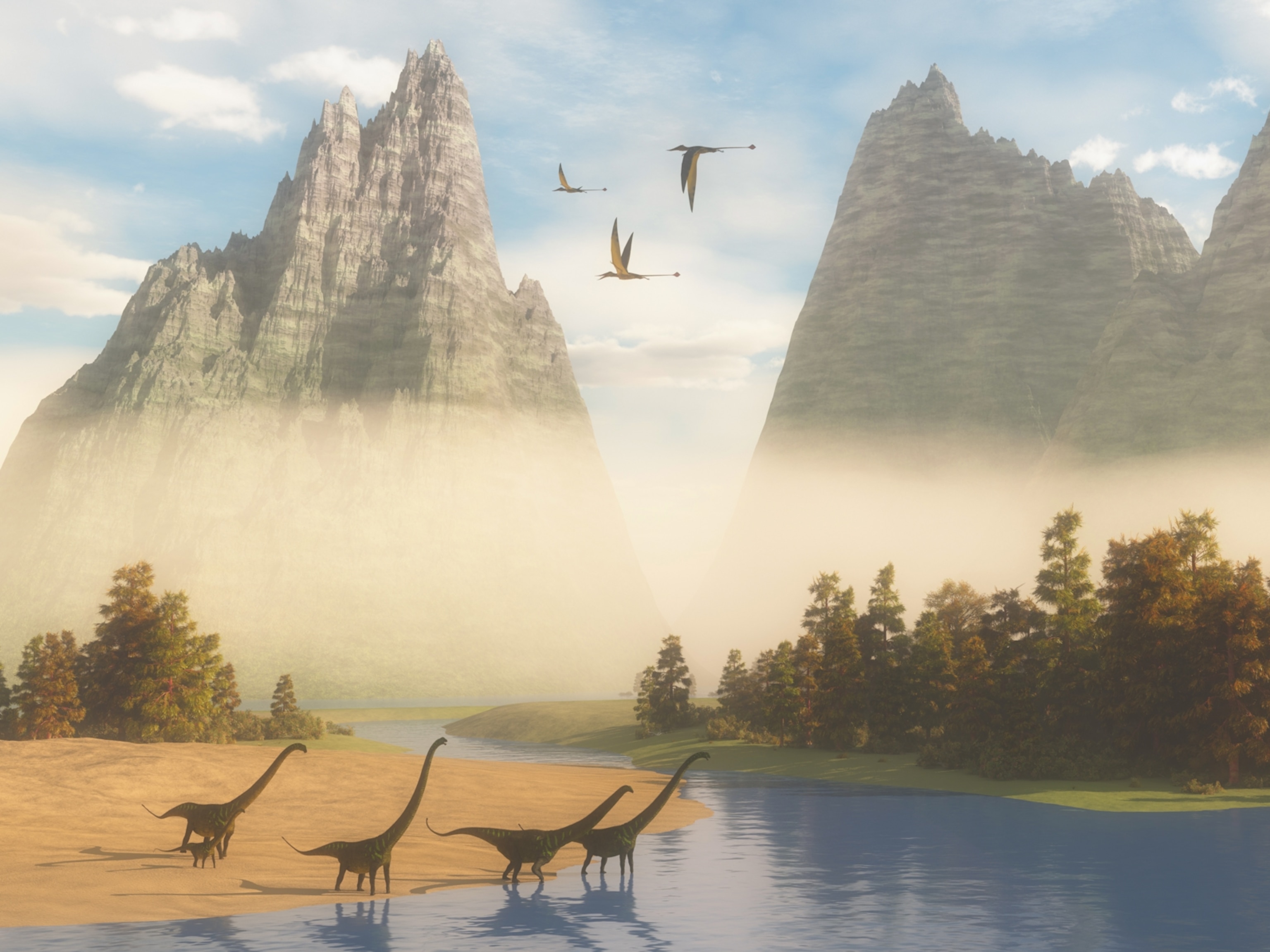Photograph courtesy Daniel Riordan-Araujo
Pictures: Prehistoric American Skull Found in Sea Cave?
Divers in an underwater cave in Mexico may have found the skull of one of the earliest Americans—and maybe his or her mastodon leftovers.
March 11, 2011
